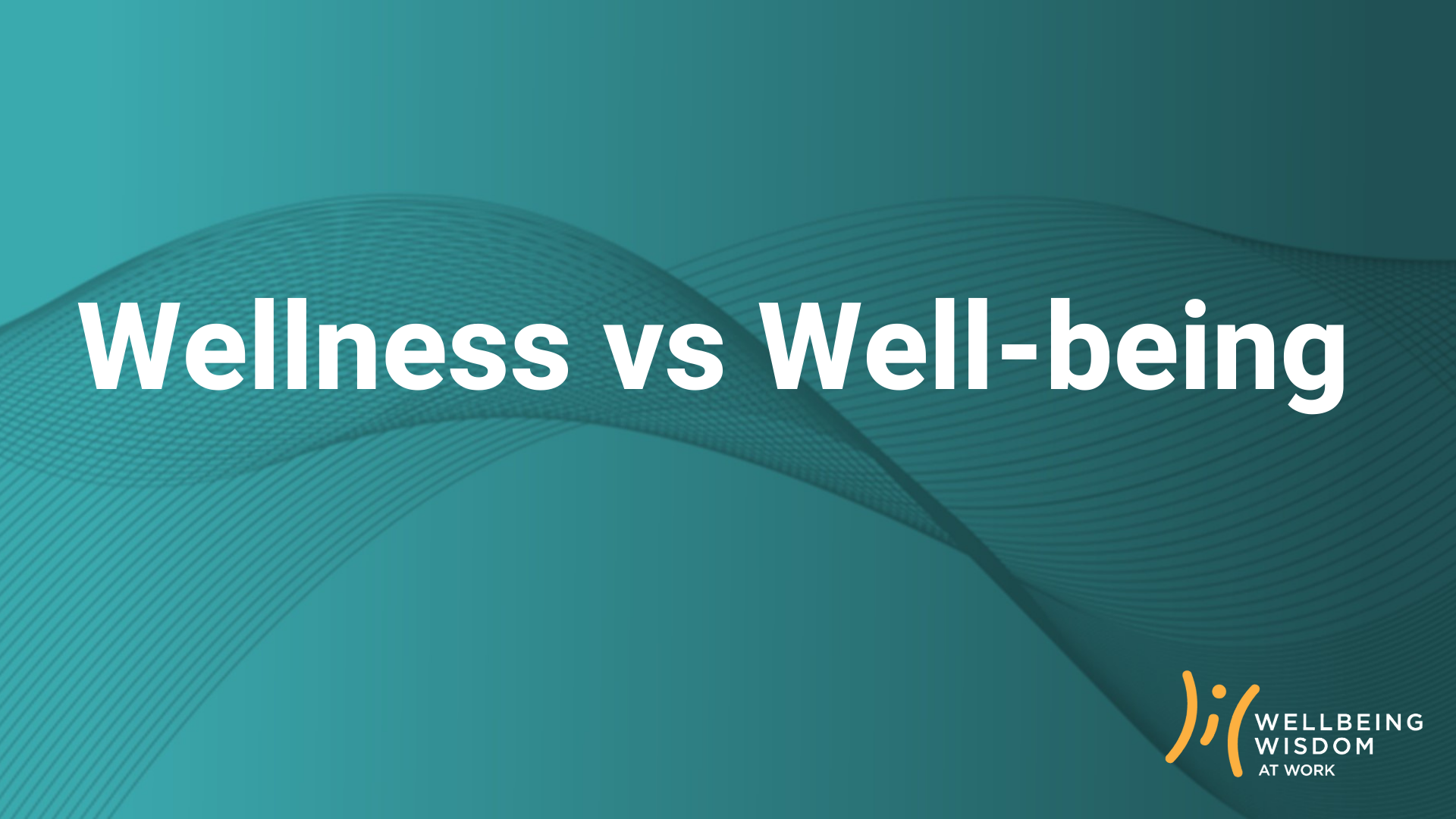What’s the difference between wellness and well-being?
These terms are often used interchangeably, but their meanings are very different. And those differences offer valuable clues for thriving during difficult times.
Note: This article originally appeared on LinkedIn and can be found here.
Author: Kellie Cummings
December 21, 2021
If there's one thing the pandemic taught us, it's that bright and hard-working people can struggle with burnout and depression. For our teams and organizations to perform well, we need to take these concerns seriously.
But what's the right mix of employee programs and benefits to support our teams in these unprecedented times? That's the question business leaders are asking us, so let's examine two categories of workplace programs, one that's well-known: wellness, and another that's more emergent: well-being.
Although these terms are used interchangeably, they have different meanings and derive from different fields of science. From a workplace perspective, wellness and well-being are incorporated into organizational processes and behaviors very differently.
Wellness: Integrating physical and mental health
Most people are familiar with workplace wellness programs. According to the CDC, over 92% of employers with 500 or more employees, and 50% of all workplaces offer some form of wellness program. Wellness is principally the integration of physical and mental health through behaviors, such as eating well, exercising, and sleeping soundly.
A RAND Corporation study showed that the biggest measurable benefits of workplace wellness programs lie in disease management, such as reducing tobacco addiction and obesity. Lifestyle programs, such as exercise and mindfulness, are correlated with lower heath care costs when participation continues over a five-year period.
Fields of science devoted to promoting wellness include nutrition science, exercise science, mindfulness research, and other domains of medical science. When you think: "body + mind,” you're probably thinking about a wellness activity.
Well-being: A sense of purpose, meaning, and mattering
Well-being reflects a sense that your life is moving in the right direction, that you have a sense of purpose and meaning and experience growth through challenge and accomplishment. The science of well-being largely stems from psychology and comprises topics like mattering and belonging, dignity, positive emotions, and flow, which is a term the late Dr. Mihaly Csikszentmihalyi used to explain why people feel energized when they lose themselves in their work.
A theme that underpins these different domains of well-being is growth. When people grow through their experiences, there is an expansion of the self that is both energizing and fulfilling.
In the workplace, well-being depends on aspects of culture, such as how people communicate, how teams prioritize relationships, and the opportunity for individuals to shape their roles to optimize meaning and mattering. One of our favorite tools is called the Job Crafting Exercise, which invites people to consider aspects of their role that are personally meaningful and facilitates conversations with managers that reveal important information about a person’s core needs and what motivates them.
Our work is often in support of an organization’s Learning and Development team to foster manager and leadership behaviors that promote organizational well-being. According to Gallup, the influence managers have on their team affects 70% of the variance in employee engagement. However, only 65% of managers are fully engaged at work.
Our research shows that the way managers greet and listen to others and how they foster acceptance on their teams can dramatically improve well-being. The well-being measurement tools we use explore a person’s sense of belonging and connection to coworkers, sense of purpose and engagement in their work, as well as their outlook on the future.
The Quick Take
So what’s a simple way to make sense of these fields? A shorthand for wellness is "my body and mind are healthy;" and a shorthand for well-being is: "my life has meaning and I feel engaged in what I do."
In the workplace, think about it this way: wellness largely has to do with behaviors and can be supported through self-serve programs. Well-being largely has to do with the way that work gets done and the positive sense of self that people derive from these experiences. Implementing wellness is often part of a company’s benefits program, whereas implementing well-being is more about culture, leader and team communication, and role definition.
Implications from COVID-19
In this second year of adapting to a pandemic, we’ve all become markedly interested in—and somewhat knowledgeable about—the experience of burnout. It doesn’t take a scientist to figure out what this term means: a lack of energy and enthusiasm for work and life. We are hearing from the leaders we work with that their teams seem less passionate about their work, less innovative, and in some ways less curious about their own personal growth.
What are the factors influencing burnout? The answers probably lie in lifestyle changes that affect our wellness and our wellbeing. Most of us are less physically active now. And working from home has eroded many of our daily rituals with friends and co-workers that punctuate our lives with moments of meaning and connection.
For example, social scientists talk about the importance of brief—but engaging—connections with strangers that typically occur outside the home, like when standing on a line at the grocery store or when riding in a taxi or Uber. These short conversations help us feel connected to the world while also shoring up our sense of mattering. However, we experience very few of these important connections amidst mask-wearing and social distancing.
While the factors causing burnout are more complex and nuanced than what’s covered in this short article, it’s important to understand that their origins stem from deficits in both wellness and well-being. And to thrive through the long winter ahead, we’ll be wise to take these practices seriously.
In the workplace, that means communication about wellness benefits is a priority. It also means that organizations should train managers on specific actions they can take to enhance well-being on their teams. How we adapt to these difficult times will help us personally and professionally in the years ahead.


